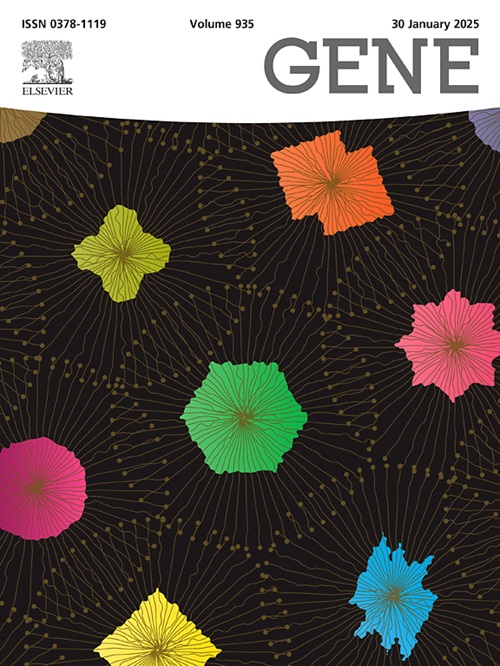扩张型心肌病伴心力衰竭的诊断生物标志物和免疫浸润的鉴定与验证,以及诊断模型的构建。
IF 2.4
3区 生物学
Q2 GENETICS & HEREDITY
引用次数: 0
摘要
扩张型心肌病(DCM)的特点是免疫细胞浸润,很容易发展为心力衰竭(HF)。该研究对扩张性心肌病和心力衰竭相关数据集进行了差异表达分析、富集分析和蛋白-蛋白相互作用(PPI)网络分析。CytoHubba用于识别枢纽基因。通过在另一个外部数据集中验证其表达和诊断价值,获得诊断生物标志物,并构建诊断模型。最后,利用单样本基因组富集分析(ssGSEA)预测心脏样本中的免疫细胞浸润。对诊断生物标记物与免疫细胞之间的关联进行了研究。NetworkAnalyst 和 miRDB 数据库用于预测转录因子和 microRNA,然后建立调控网络。DSigDB 数据库用于预测候选药物。随后,利用小鼠 DCM 伴高频模型验证了这些基因的表达水平。本研究发现,差异表达基因富集在细胞外基质组织、心肌肥大和其他免疫相关的生物过程中。最终确定了 OMD 和 THBS4,其提名图具有令人满意的预测能力和较强的校准能力。此外,这两个诊断性生物标记物与多种免疫浸润细胞有显著关联。最后,得到了 2 个 TFs、65 个 microRNA 和 10 个候选药物。在动物实验中,两个诊断生物标志物的表达趋势与生物信息分析的结果一致。OMD和THBS4被确定为DCM伴高频的枢纽免疫相关诊断生物标志物。我们的研究为该疾病的诊断和治疗提供了新的见解。本文章由计算机程序翻译,如有差异,请以英文原文为准。
Identification and validation of diagnostic biomarkers and immune infiltration in dilated cardiomyopathies with heart failure and construction of diagnostic model
Dilated cardiomyopathy (DCM) is characterized by immune cell infiltration and can readily progress to heart failure (HF). In the study, differential expression analysis, enrichment analysis, and protein–protein interaction (PPI) network analysis were performed on DCM with HF-related datasets. The CytoHubba was used to identify hub genes. Diagnostic biomarkers were obtained by validating their expression and diagnostic value in another external dataset, and a diagnostic model was constructed. Finally, single-sample gene set enrichment analysis (ssGSEA) was used to predict immune cell infiltration in cardiac samples. The associations between diagnostic biomarkers and immune cells were investigated. The NetworkAnalyst and miRDB databases were used to predict transcription factors and microRNAs, followed by establishing regulatory networks. The DSigDB database was used to predict drug candidates. Subsequently, a mouse model of DCM with HF was used to validate the expression levels of these genes. The present study revealed that differentially expressed genes were enriched in the extracellular matrix organization, cardiac muscle hypertrophy, and other immune-related biological processes. OMD and THBS4 were finally identified, and the nomogram has satisfactory prediction and strong calibration ability. In addition, the two diagnostic biomarkers exhibited significant associations with multiple immune infiltrating cells. Finally, two TFs, 65 microRNAs, and 10 drug candidates were obtained. In animal experiments, two diagnostic biomarkers showed expression trends consistent with the results of bioinformatic analysis. OMD and THBS4 have been identified as hub immune-related diagnostic biomarkers for DCM with HF. Our research provides novel insights into the diagnosis and treatment of the disease.
求助全文
通过发布文献求助,成功后即可免费获取论文全文。
去求助
来源期刊

Gene
生物-遗传学
CiteScore
6.10
自引率
2.90%
发文量
718
审稿时长
42 days
期刊介绍:
Gene publishes papers that focus on the regulation, expression, function and evolution of genes in all biological contexts, including all prokaryotic and eukaryotic organisms, as well as viruses.
 求助内容:
求助内容: 应助结果提醒方式:
应助结果提醒方式:


